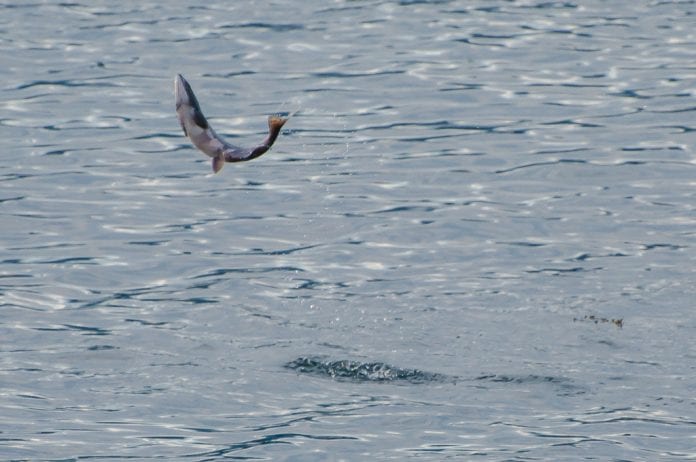
Prince William Sound hatcheries produced some 28.5 million salmon in 2017 worth an estimated ex-vessel value of $69 million, or 57 percent of the total ex-vessel vale for common property commercial salmon fisheries in the area.
Of that total, about $36 million came from pink salmon, $23 million from chum and $10 million from sockeyes, according to the Alaska Department of Fish and Game’s new 2017 Alaska Fisheries Enhancement Report.
By species, Prince William Sound hatcheries contributed an estimated 85 percent of the chum, 55 percent of the pink, 51 percent of the sockeye and 3 percent of the coho salmon in the common property commercial fisheries, plus another 3.4 million salmon harvested for cost recovery.
For the sport, personal use, and subsistence fisheries, coho salmon contributed 24,000 fish, followed by sockeyes, 13,000, pink, 9,000 and chum, 1,000, the report said.
In Southeast Alaska the commercial harvest included some eight million hatchery fish worth an estimated ex-vessel value of $53 million, or 39 percent of the total common property commercial fishery. Chums contributed $45 million, followed by cohos, $3.7 million, and king, $2.6 million. Also in Southeast Alaska the sport/personal use/subsistence fisheries had a hatchery catch of 34,000 silver, 7,000 king, 5,000 chum and 4,300 reds.
At Kodiak, the commercial catch of hatchery salmon numbered 693,000 fish worth an estimated ex-vessel value of $3 million or 6 percent of the total ex-vessel value, with sockeyes contributing $2.3 million and chum $460,000.
Sport/personal use/subsistence fisheries at Kodiak harvested 15,000 cohos, 1,300 kings and 1,000 sockeyes.
Another 146,000 hatchery salmon with an estimated ex-vessel value of $594,000 or 2 percent of the total ex-vessel value were harvested in the Cook Inlet commercial fishery, mostly reds followed by humpies. Sport/personal use/subsistence fisheries harvested some 1,4000 reds, 13,000 silvers, 2,500 pink and 1,900 king salmon.
Overall last year, the commercial fleet caught some 47 million hatchery produced salmon, a harvest worth an estimated $331 million in first wholesale value and $162 million in ex-vessel value.
Hatchery operators are forecasting a return of some 54 million fish in 2018, including 38 million pink, 13 million chum, 1.9 million sockeye, 1.4 million coho and 105,000 Chinook salmon to private non-profit hatchery projects, as well as 92,000 Arctic char, rainbow trout, landlocked salmon and grayling for freshwater sport harvest.
The 2017 hatchery return of 50 million fish compared to a 2017 forecast of 65 million fish.
There are 29 salmon hatcheries currently operating in Alaska, 25 of them operated by private nonprofit corporations funded primarily from sale of a portion of hatchery returns. Two sport fish hatcheries are operated by the state, one research hatchery by National Marine Fisheries Service, and one production hatchery by the Metlakatla Indian Community.
Hatchery fish comprised 21 percent of the total statewide commercial salmon harvest, the lowest percentage of hatchery produced fish in the harvest since 1995. ADF&G attributed the low hatchery contribution to a strong return of wild stocks. In fact, 2017 was the third highest wild stock commercial salmon harvest in state history. In addition, 194,000 Alaska hatchery-produced fish were caught in the sport, personal use and subsistence fisheries.
ADF&G officials noted that hatchery production in Alaska is designed to supplement, not replace, wild stocks. Over the past five years, hatchery produced salmon in Alaska have returned alongside of record returns of wild stocks. Salmon harvests in Alaska in 2013, 2015 and 2017 were three of the four highest wild stock returns in history back to the late 1800s.
Last year’s chum harvest was the highest and pink harvest the fourth highest on record. Other records were set last year in areas of Alaska with no hatchery production, including record returns of coho salmon in Norton Sound, and record returns of pink salmon in Chignik and the Alaska Peninsula.
The Bristol Bay harvest last year was the third highest since 1975, and the third consecutive year of strong harvests.














